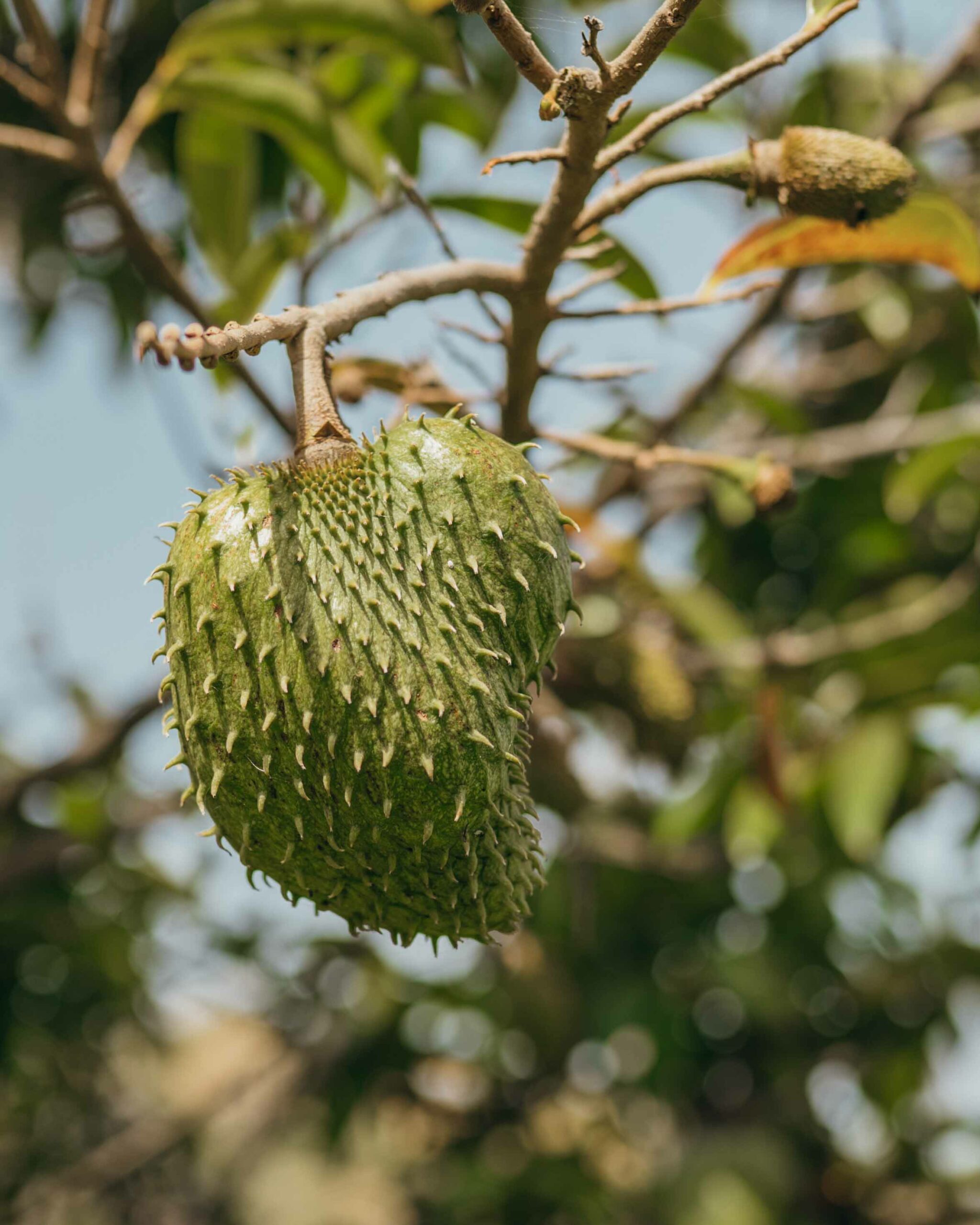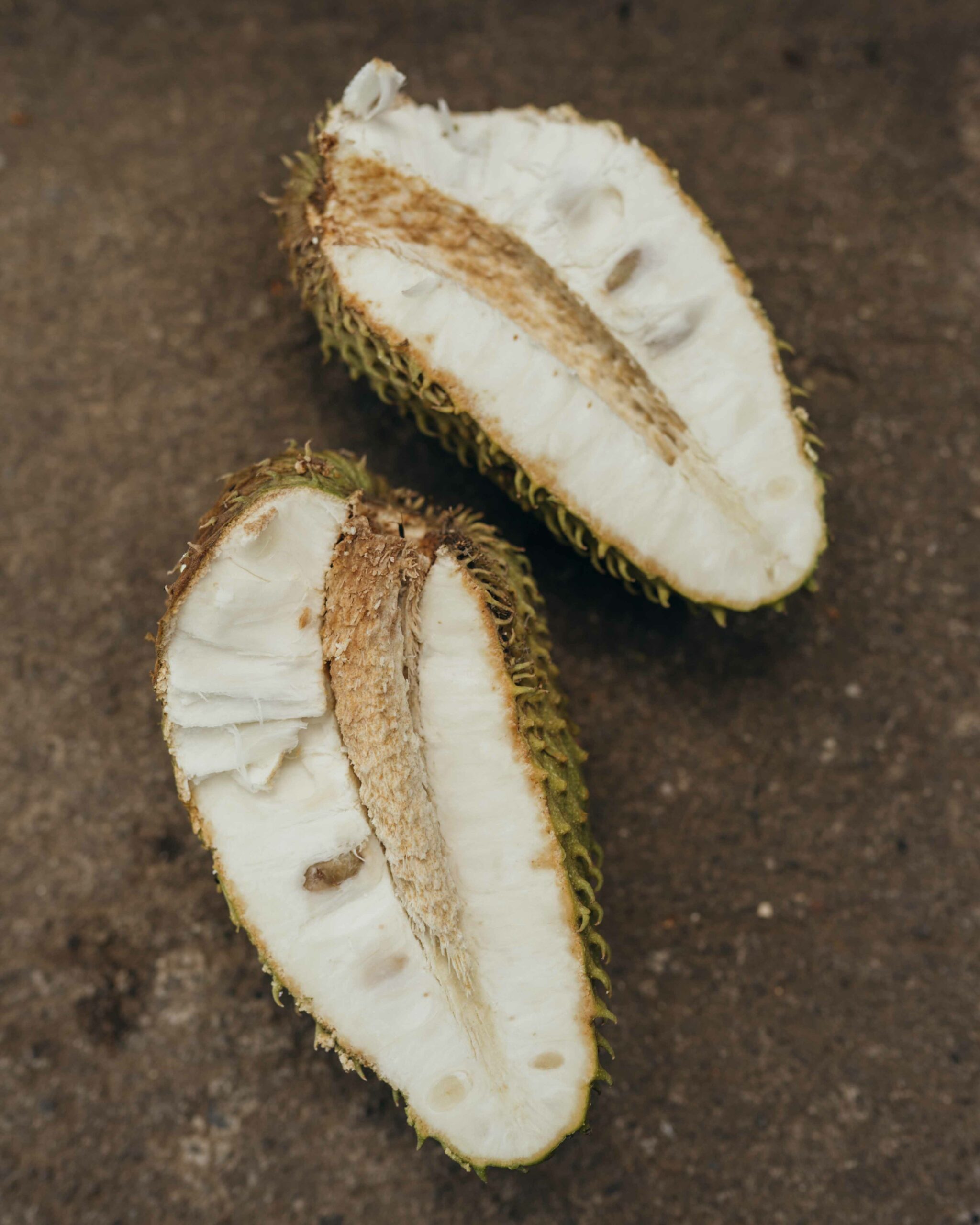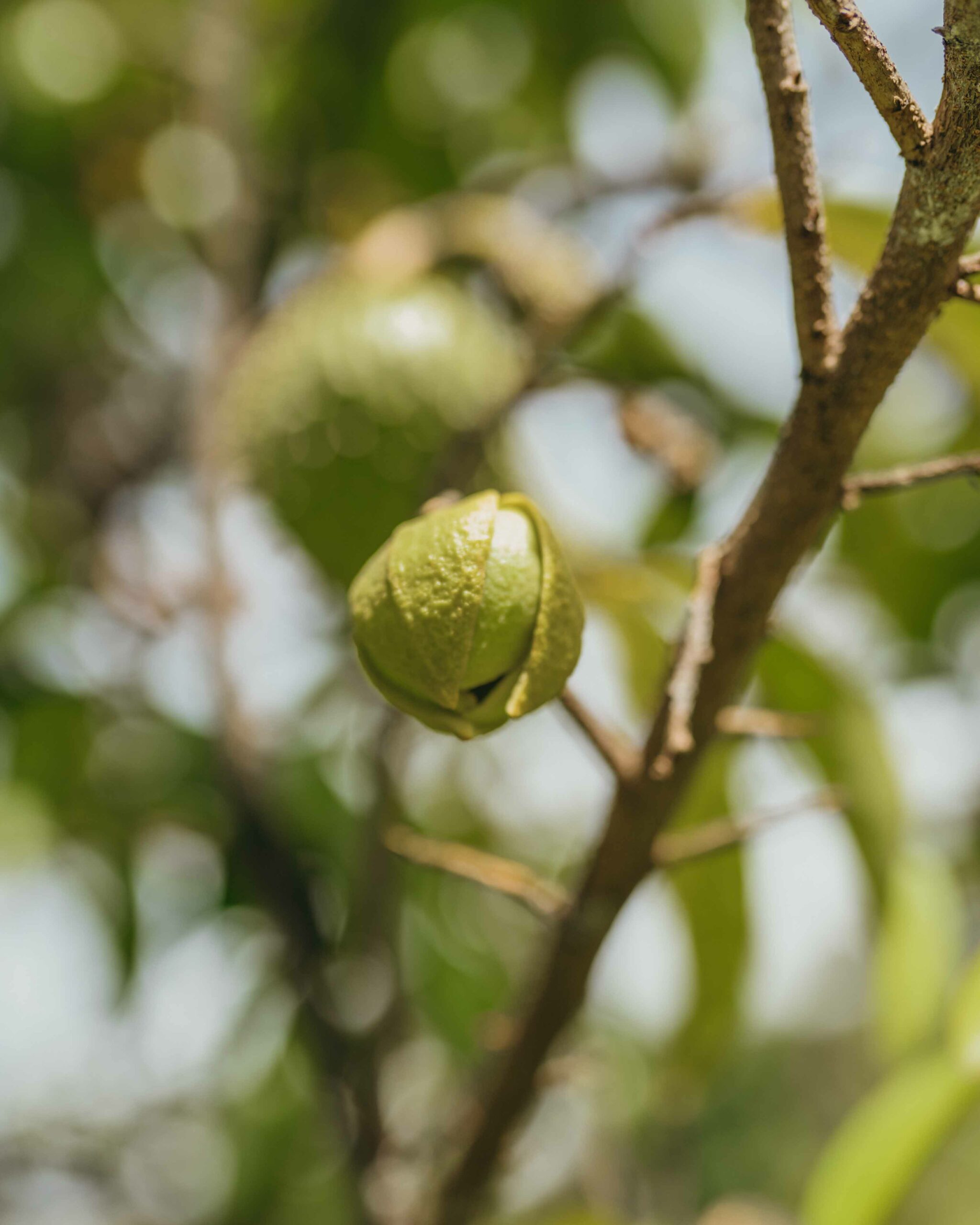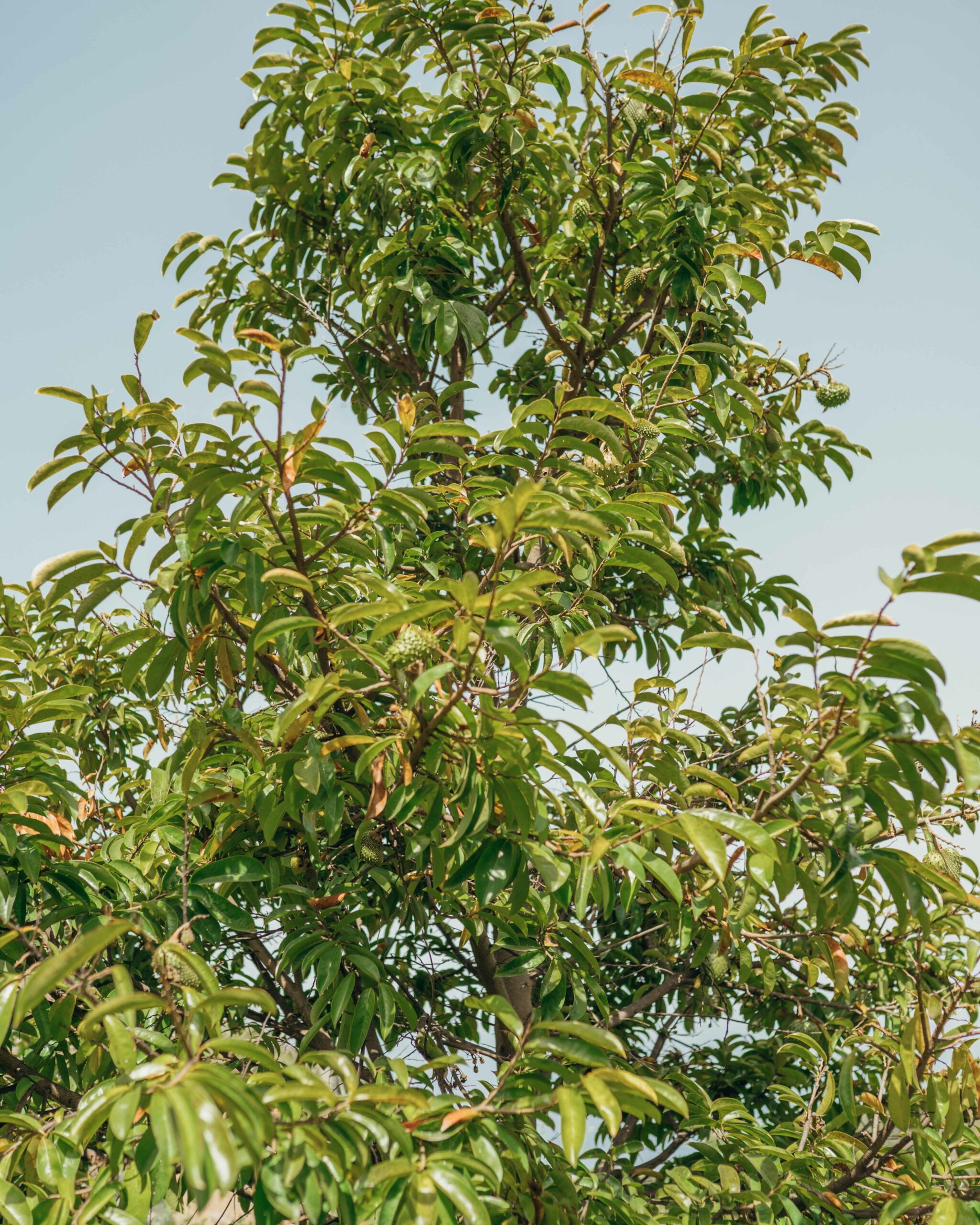Annona murricata
STACHELANNONE, GRAVIOLA, SAUERSACK
Englische Bezeichnung: Soursop
Spanische Bezeichnung: Guanabana/Graviol
Familie
Annonengewächse (Annonaceae)
Verwendbare Teile:
Frucht, Blätter, Rinde, Samen und Wurzeln
Hauptbestandteile:
Mineralstoffe: Kalium, Magnesium
Vitamine: B-Vitamine, C
Ernte-Hinweise:
Die Ernte findet ganz kurz bevor die Früchte reif sind statt. Grund ist, dass die reifen Früchte aufgrund ihres Gewichts von 1 bis 4 kg beim Herabfallen zerplatzen und unbrauchbar werden: sie verderben sehr schnell. Die schwarzen Kerne sollten nicht verzehrt werden.
Verwendung:
Eis, Marmalade, Säfte, Pudding & Tee
Eine Stachelannone ist rein äußerlich einer grünen Kastanie in Schale ähnlich, allerdings ist sie erheblich größer.
Die biegsamen Stacheln haben keinen Effekt auf sogenannte Fraßfeinde der Pflanze. In reifem Zustand ist der Fruchtkörper außerordentlich druckempfindlich. Das innere Fruchtfleisch der Stachelannone ist weiß, weich und saftig. Einheimische setzen Fruchtfleisch, Blätter, Rinde, Samen und Wurzeln der Stachelannone seit langem als natürliches Medikament ein. Sie nutzen es gegen Bakterien-, Pilzinfektionen und zur stärkung des Imunsystem.
Auch heute noch werden die Frucht und Blätter für verschiedenste Beschwerden eingesetzt.
Die Graviola birgt ein einzigartiges Aroma. Das Fruchtfleisch kombiniert eine gewisse Süße mit einer etwas säuerlichen Geschmacksrichtung, die nachhaltige Würze erinnert an den durchdringenden Geschmack von Honig.
Family
Annonaceae (Annonaceae)
Usable parts:
Fruit, leaves, bark, seeds and roots
Main components:
Minerals: potassium, magnesium
Vitamins: B vitamins, C
Harvesting guideline:
The harvest takes place very shortly before the fruits are ripe. The reason is that due to their weight of 1 to 4 kg, the ripe fruits burst when they fall and become unusable: they spoil very quickly. The black seeds should not be eaten.
Use:
Ice Cream, Marmalade, Juices, Pudding & Tea
A soursop is purely externally similar to a green chestnut in shell, but it is considerably larger.
The flexible spines have no effect on so-called predators of the plant. When ripe, the fruit body is extremely sensitive to pressure. The inner flesh of the prickly pear is white, soft and juicy. Locals have long used the flesh, leaves, bark, seeds and roots of the prickly pear as a natural medicine. They use it against bacterial and fungal infections and to strengthen the immune system.
Even today, the fruit and leaves are used for a wide variety of ailments.
Graviola has a unique flavour. The flesh of the fruit combines a certain sweetness with a somewhat sour taste, and the lasting spiciness is reminiscent of the penetrating taste of honey.
Familia
Annonaceae (Annonáceas)
Partes utilizables:
Frutos, hojas, corteza, semillas y raíces
Componentes principales:
Minerales: potasio, magnesio
Vitaminas: vitaminas del grupo B, C
Guía de cosecha:
La recolección tiene lugar muy poco antes de que los frutos estén maduros. La razón es que, debido a su peso de 1 a 4 kg, los frutos maduros revientan al caer y quedan inutilizables: se estropean muy rápidamente. Las semillas negras no deben comerse.
Uso:
Helado, Mermelada, Zumos, Pudding y Té
Una guanábana es puramente similar externamente a una castaña verde en cáscara, pero es considerablemente más grande.
Las espinas flexibles no tienen ningún efecto sobre los llamados depredadores de la planta. Cuando está maduro, el cuerpo del fruto es extremadamente sensible a la presión. La pulpa interior del higo chumbo es blanca, blanda y jugosa. La población local utiliza desde hace mucho tiempo la pulpa, las hojas, la corteza, las semillas y las raíces del higo chumbo como medicina natural. Lo utilizan contra las infecciones bacterianas y fúngicas y para reforzar el sistema inmunitario.
Aún hoy, el fruto y las hojas se utilizan para una gran variedad de dolencias.
La graviola tiene un sabor único. La pulpa del fruto combina un cierto dulzor con un sabor algo ácido, y el picor duradero recuerda al penetrante sabor de la miel.










































